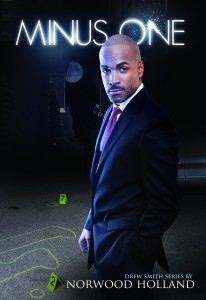A Conversation with Brian Boger
January 17, 2014
When I first picked up Southern Fate I thought because the author was an attorney it was just another legal thriller, but the opening didn’t neatly fit into the thriller formula. I read on thinking perhaps it was a mystery but the first body didn’t show up until Chapter 9. Obviously not a mystery, so I read on and suddenly it swept me up and blew me away like a hurricane. The genre was literary and quintessentially Southern with elements of both mystery and thriller. The novel centers on the inner story of a South Carolina attorney Frank Rhodes and the journey to his fate and fortune.
Introduced as a rather pathetic character Frank Rhodes is an accident prone klutz and a mediocre lawyer whose only passion is hunting and fishing. The only thing making him worthy of attention is his extreme good looks. Suddenly things change for Frank in a big way when he lands a windfall judgment instantly propelling him into the national spotlight. On the road to money and fame he soon learns the bad news his wife is leaving him for another women. And things get complicated quickly when a serial arsonists plaguing the city with one of the first victims being a member of Frank’s non-traditional family. Meanwhile his brother teaches him an unorthodox method on how to get develop rhythm to thereby overcome his clumsiness, a lifelong affliction.
There is much going on in Southern Fate with numerous subplots. The book is full unexpected plot twists and Boger takes the reader into areas past traditional Southern writers feared to tread. He incorporates several popular motifs commonly found in Southern literature including sense of family and sense of place. However we see some newer motifs developing. For example the non-traditional family and same sex relationships. At a young age Frank’s father was killed by a burglar. His mother and another single windowed mother with a son of similar age merged households to form a non-traditional family headed by two women. While these women are heterosexual another non-traditional family with young children taking root when Frank’s wife leaves him for her same sex lover with young children. These types of non-traditional modern family models are uncommon in traditional Southern literature but realistically capture today’s society. Lesbian relationships have rarely been openly presented in such openly fashion and again capturing the dynamics of today’s modern families.
Another traditional motif is the sense of place. Southerners are exceedingly proud of their region and as social historian Carl N. Degler once described the South as a region “where roots, place, family and tradition are the essence of identity”. All of which are apparent in Southern Fate which in this jet age moves from Columbia to Charleston, New York, the Bahamas and Costa Rica. However, make no mistake the stories beginning, middle, and end are deeply rooted in Columbia, and Boger does not spare the details of Columbia’s rich Civil War history recounting the tales of Sherman’s march. Indeed the ghost of the War against Northern Aggression and the horrors Columbia faced under Sherman conjures up a deus ex machina villain the serial arsonist. Like Bo Radley suddenly arriving on the scene and not a moment too soon.
This is perhaps the books one major shortcoming. We never get to know the villain or his motivations only that he has targeted women belonging to the Daughters of the Confederacy in the name of Sherman. There are no red herrings or clues to suggest anything about the character and his motivations. The villain emerges in the end and disappears in a puff of fire and flames. As a reader in the end I was left frustrated with too many questions as was Frank. Perhaps this was the author’s intent.
As social issues and politics evolve with time so does a society’s literature, and Southern Fate stands as an exemplary work of modern Southern literature. The author is a practicing attorney, the father of three. He and his wife live in Columbia where he studied law. He also holds a degree in English from the University of Virginia. Brian Boger pushes the boundaries and thereby expands the conventional motifs placing him among the vanguard of new Southern writers.
I would dare suggest being on the future lookout for Brian Boger. He expects to release his second title in 2014. When asked about the project, he says “the working title is Champagne Friday. It’s another legal thriller type book with some (surprise) literary themes like loss, redemption, vindication, and young men leaving their Bacchanalian Rite of Passage behind them for good women. It’s a humdinger of a book developing strong female characters appealing to a broader female audience. The women are cool.”
If the women are anything like the men of Southern Fate it should indeed be a humdinger. Southern Fate is an incredibly delightful read, rich with local color and chocked with quirky characters. Boger’s voice and style are a cross between John Gresham and John Brendt. The state capital Columbia might want to get behind their adopted favorite son because Southern Fate could very well do for Columbia what Midnight In the Garden of Good Evil did for Savannah.
Chocolate City’s gentrification and the trail of tears
August 5, 2012
Gentrification is destroying whole communities leaving lower income residents homeless and hopeless seemed to be Saturday’s message from the special screening of Chocolate City sponsored by Maximize Good at the Watha T. Daniel Public Library. A discussion with filmmaker Ellie Walton and DC residents followed. While the film was shot in 2003 almost a decade later the message is resonating with greater urgency. The documentary covers the displacement of over 400 families who lost their battle against forced displacement from the Arthur Capper/Carrollsburg public housing project in Washington, DC. Filmmaker Ellie Walton views Chocolate City as a call to action against nationwide gentrification and redevelopment programs. The film explores the impact of rapid gentrification in the area through the work of a local group of women working for justice in their neighborhood.
In 2001, DC received a $34.9 million Hope VI grant to redevelop the 23-acre Capper/Carrollsburg public housing project as a mixed-income community, with the 700 public housing units to be replaced one-for-one, along with 1,000-plus market-rate and workforce-rate rental and ownership units and 50 Section 8 ownership units. The project is scheduled to be completed this year.
The 400 displaced families were promised a one-to-one replacement of all demolished public housing units. That is, for every one family displaced they would be replaced with a unit in the new housing project. However residents later discovered lower income residents did not qualify. Income qualifications based on regional median income standard disqualified a majority of renters with few qualifying to buy. The average median household income inside the beltway is $90.
Hope VI requires mixed income residents meet an income threshold of 60% of the regional average median income. Many of the former residents were minimum wage earners and financially barred from returning. The reality is that mixed income does not include low income. The former residents soon found additional barriers to reentry including a vague rule that only residents in “good standing” would be allowed to return those without past felony convictions.
As the discussion progressed many spoke with concern about the unfairness of current policies with some telling of their own displacement. In the film examples were sited on how the loss of community and its support resulted in the death of older displaced residents. In the discussion a participant identified as Daniel born and raised in DC told of his being homeless and currently having wait listed 8 years for housing. Community activist Louise Thundercloud shared her personal fights with DC Council members characterizing the situation as “cultural genocide” and efforts by the moneyed establishment to destroy communities of color specifically Black and Latino.
One participant likened the situation to the West Bank Israeli settlements with the Palestinians being pushed off their homelands. The issue of affordable housing is not likely to go away. According to the Urban Institute the federal government provides housing assistance through rent subsidies, tax credits for building affordable housing, and block grants for affordable housing initiatives. But only about one of every four eligible households gets such aid. And subsidized housing is found disproportionately in distressed neighborhoods characterized by crime, poorly performing schools, and a lack of jobs.
Low-income families are being forced out of their communities similar to the forced displacement of Native Americans in the 1830s. The history lesson remains the same. Misguided government policies are doing more harm than good and by inadequately addressing the problem only perpetuates the cycle and generations of inescapable poverty and disadvantage. Chocolate City as the filmmaker declares does indeed stand as a call to action.
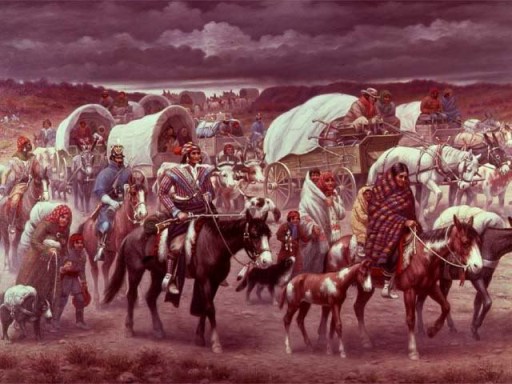
Night Hawk an historical romance of substance
July 21, 2012
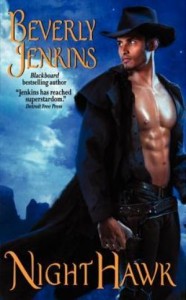 Beverly Jenkins’ Night Hawk is so evocative of deep emotions it seems she’s elevated the historical romance to a high art enhancing our understanding of American life during the 19th Century. Through her effective didactic story telling she immerses the reader back to another time. While the African American heritage primarily flows from the Middle Passage there are other neglected streams Jenkins mines like a gold panning prospector. She offers up a tale threading rich historical nuggets reflecting dark times of struggle and racial strife. People of color much like the larger society immigrated to the American shores from foreign lands in search of freedom and fortune and therein thrived despite racially sanctioned legal limitations.
Beverly Jenkins’ Night Hawk is so evocative of deep emotions it seems she’s elevated the historical romance to a high art enhancing our understanding of American life during the 19th Century. Through her effective didactic story telling she immerses the reader back to another time. While the African American heritage primarily flows from the Middle Passage there are other neglected streams Jenkins mines like a gold panning prospector. She offers up a tale threading rich historical nuggets reflecting dark times of struggle and racial strife. People of color much like the larger society immigrated to the American shores from foreign lands in search of freedom and fortune and therein thrived despite racially sanctioned legal limitations.
So goes the story of Ian Vance Bigelow, a Scotsman and son of a Black man, and the equally compelling story of Maggie Freeman, the daughter of a Native American Kaw and a Black man. The spark of their romance and the light of their love make the vicarious experience of their journey worth following.
Night Hawk begins in 1889 two continents apart with Ian Vance Bigelow aka Preacher the gun toting bounty hunter turned U.S. Marshall returning to his homeland Scotland to visit his mother’s grave and there confronts his mother’s father. The wealthy grandfather delivers the mother’s dowry–festering guilt money. On Ian’s return journey traveling from Boston to his ranch in Wyoming by train and horse he finds himself burdened with escorting a prisoner. On a train stop in Dowd Kansas his path intersects with Maggie Freeman. Maggie, orphaned at an early age has been forced to eke out a living. In an attempted rape while working as a cook in a cat house she defends herself resulting in her attacker’s accidental death. Under arrest and to avoid a lynch mob the Sheriff attempts to move his prisoner to Kansas City when circumstances forced him to turn Maggie over to the U.S. Marshall, Ian Vance Bigelow, for delivery. From thereon to Cheyenne in a series of episodic adventures the two must overcome a series of obstacles including a budding romance.
Jenkins embeds accurate historical facts based on the established roots of real people into her stories paying homage to the diverse roots of the American people. Her lead characters are heroic, courageous, and far from stereotypical. exploring the struggles of African-Americans, Chinese-Americans, and Native Americans. The couples’ journey is skillfully woven with remarkable fidelity into the American historical tapestry. With some 30 books the award winning romance novelist Beverly Jenkins ranks among best, but as for the specific African American historical romance she is a pioneer at the absolute top, and with her vivid characters, intense love scenes and substantive themes it easy to see how she got there.
The Intouchables becoming an international box office hit
June 9, 2012
 Since most Americans generally frown on foreign films particularly those with subtitles they will probably have to wait for the American remake of The Intouchables–the rights of which have been brought by The Weinstein Co. and probably now in the pipeline. Those who wait do so at a loss. The original is already the most watched film in France and quickly becoming an international box office hit having won the Tokyo International Film Festival best film award and the César Awards for best actor (the French equivalent to the American Oscar). Omar Sy is the first actor of African descent to receive a César for Best Actor. The Intouchables is 2012’s highest grossing move in a language other than English. That says much to those who have traveled abroad and seen how American films dominate foreign cinema.
Since most Americans generally frown on foreign films particularly those with subtitles they will probably have to wait for the American remake of The Intouchables–the rights of which have been brought by The Weinstein Co. and probably now in the pipeline. Those who wait do so at a loss. The original is already the most watched film in France and quickly becoming an international box office hit having won the Tokyo International Film Festival best film award and the César Awards for best actor (the French equivalent to the American Oscar). Omar Sy is the first actor of African descent to receive a César for Best Actor. The Intouchables is 2012’s highest grossing move in a language other than English. That says much to those who have traveled abroad and seen how American films dominate foreign cinema.
The Intouchables is based on a true story about the developing bond between a quadriplegic paralyzed from the neck down and an ex-con Black man who reluctantly becomes his caretaker. The wealthy Philippe played by Francois Cluzet lives in a luxurious Parisian mansion. Driss just out of prison from a six month robbery sentence shows up among a line of applying experienced white caretakers. Driss is not there for the job but a for signature verifying that he applied, the signature evidencing he meets the requirements for state benefits. But Philippe is drawn to Driss’s magnetic unflappable rambunctious and unrefined personality luring him into taking the job. Driss fights it every step away finally submitting to the mansion’s comfort and riches. Philippe introduces him to fine art and classical music while Driss in return offers lessons in American music through the sounds of Kool and the Gang and Earth Wind and Fire.
The employment relationship survives a 30 day probationary period overcoming the stress test sealing a bond, but the tests don’t stop here. Driss sets out on a constant quest to seduce Philippe’s secretary while coping with Phillip spoiled brat daughter. Driss too has his own handicaps. His mother kicks out of the house and a not being there for a younger brother involved in drug activities takes its toll on family. Then Driss discovers Philippe has a purely epistolary relationship with a German woman named Elenore and attempts to bring the pen-pal lovers together. The employer and employee become buddies each instinctively knowing how to serve one another.
Driss’ comedic quick witted response to white French bourgeois culture provides much of the stories comedic fodder. And it is incredibly funny with great writing, great cinematography and a sublime soundtrack blending both European classical music and American R&B.
Without a doubt much of this film’s success is attributable to Omar Sy’s superb acting. A minor accomplished French television actor Omar Sy is skyrocketing across the international screen with his portrayal of Driss. Hollywood’s new sought after hot talent was born in France to a Mauritanian mother and Senegalese father. One of eight children he grew up in a housing project 20 miles west of central Paris. Out of the housing project Sy similarly shares much with his character Driss. As quoted in the The Los Angeles Times [h]e speaks knowingly of “two Frances”–the stratum of the country that is wealthy and has access to the arts and the largely immigrant working class that does not. “The thing about this movie,” he said proudly, “is that it brought them together. People from one France came to the theater not knowing anything about the other France and they left having learned a lot, having sat together and laughed at the same jokes.”
Variety critic Jay Weisberg wrote a searing review calling it racist describing Driss as a performing monkey and “jolly house slave of yore, entertaining the master while embodying all the usual stereotypes about class and race.” As a Black man daily experiencing the vestiges of slavery and global racism first hand I was nevertheless thoroughly entertained. To Weisberg I say lighten up and laugh quoting Victor Hugo Laughter is the sun that drives winter from the human face.
Mysticism in Latino Writing
November 20, 2011
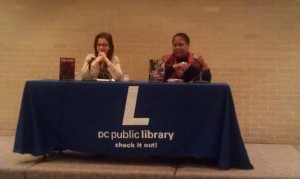
The MLK Library presented a Saturday afternoon book discussion on Mysticism in Latino Writing featuring authors Lyn Di Iori and Dahlma Llanos Figeroa. The authors discussed the role of mysticism in their novels. Lyn Di Iori’s Outside the Bones and Dahlma Llanos-Figueroa’s Daughters of the Stone are both receiving rave reviews. Iori’s Outside the Bones is an erotically charged ghost story set in both present-day New York and Puerto Rico. Praised as her brilliant debut novel it takes a mesmerizing look at issues of race, class, power and greed with Afro-Caribbean witchcraft rituals deftly woven through a sixteen year mystery unraveling a woman’s disappearance.
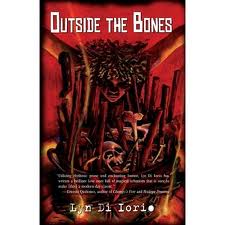 Figueroa’s Daughters of the Stone follows a sacred stone handed down five generations used to invoke mystical powers and rituals of the old ones. A rich sensual tale of mothers and daughters, love and sorrow, hardship and pride the novel through conjuring up the spirits renders a magical, deeply real, and vividly told story surrounding diasporic people.
Figueroa’s Daughters of the Stone follows a sacred stone handed down five generations used to invoke mystical powers and rituals of the old ones. A rich sensual tale of mothers and daughters, love and sorrow, hardship and pride the novel through conjuring up the spirits renders a magical, deeply real, and vividly told story surrounding diasporic people.
Both authors of Puerto Rican descent have chosen to raise the voice of the American Latina, half of the nation’s largest growing ethnicity, a segment of our culture not often heard. The powers of the Santeria, a religious practice with its African origins and Catholic influences and Puerto Rican spiritualism lie at the heart of both novels. Highly talented both authors continue a renaissance of award winning Latina writers exposing an American experience so long overlooked.
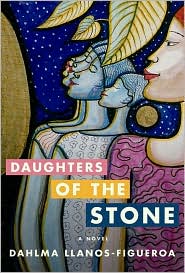
It has been said “Latina writers are powerful and seductive in their works. Their writings encompass the feelings women have in different situations, from dealing with a male-dominated society to family relationships.” No doubt the same can be said of the works of Iori and Dahlma. After readings the discussion ended with the interested patrons peppering the authors with questions about their themes, writing habits, and the Puerto Rican experience.
MLK Librarian Kathy Jenkins ended the program enthusiastically promising future similar author events. MLK Library and MahoganyBooks partnered in producing the program with the support of More Than Words (www.morethanwordsliterary.com) and Go On Girl! Book Club and Las Comadres.



